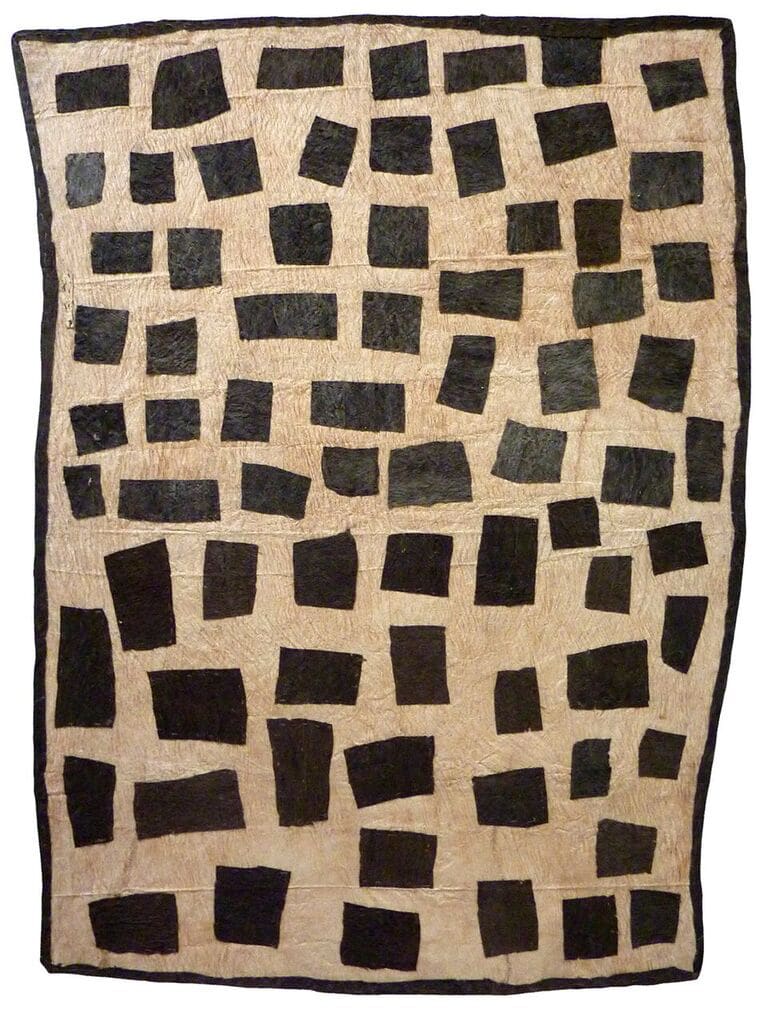Mionomehi Oriseegé (Ancestral Paths): Barkcloth from Omie
Past exhibition
Brenda Kesi (Arire) Papua New Guinean, b. c.1937
Taliobame'e nioge
natural pigments on nioge (barkcloth)
105 x 77 cm
832385
Ancestral Design of Mud. Brenda has created an ancestral sihoti'e taliobame'e (design of the mud) as she was taught by her mother Gov'ovino when she lived at the old Emate...
Ancestral Design of Mud.
Brenda has created an ancestral sihoti'e taliobame'e (design of the mud) as she was taught by her mother Gov'ovino when she lived at the old Emate clan village Enope before the 1951 eruption of Huvaimo (Mount Lammington). Brenda recalls how before that her mother was taught this design by her mother Munne. These square designs are known as taliobame'e. She explains how in the old days of making barkcloths the women had no paints so they would soak the barkcloth in mud. cut the desired pieces and then sew them onto the plain barkcloth. The contrasting effects would results in various bold visual designs. The design was sewn with a bat-wing bone needle and a river reed was shredded to create the sewing thread. The Omie creation story tells of how the very first sihoti'e nioge (mud dyes barkcloth) was created by Suja, the first Omie woman and mother of the world, under instruction from Mina, the first Omie woman and mother of the world, under instruction from Mina, after she experienced her first menstruation. Suja dyed the plain barkcloth in the volcanic clay at the River Uhojo at the base of the sacred Mount Obo. Suja wore the mud-dyed barkcloth during her mentsruation and lived in seclusion in a small hut known as je'o jarwe for its duration.
Brenda has created an ancestral sihoti'e taliobame'e (design of the mud) as she was taught by her mother Gov'ovino when she lived at the old Emate clan village Enope before the 1951 eruption of Huvaimo (Mount Lammington). Brenda recalls how before that her mother was taught this design by her mother Munne. These square designs are known as taliobame'e. She explains how in the old days of making barkcloths the women had no paints so they would soak the barkcloth in mud. cut the desired pieces and then sew them onto the plain barkcloth. The contrasting effects would results in various bold visual designs. The design was sewn with a bat-wing bone needle and a river reed was shredded to create the sewing thread. The Omie creation story tells of how the very first sihoti'e nioge (mud dyes barkcloth) was created by Suja, the first Omie woman and mother of the world, under instruction from Mina, the first Omie woman and mother of the world, under instruction from Mina, after she experienced her first menstruation. Suja dyed the plain barkcloth in the volcanic clay at the River Uhojo at the base of the sacred Mount Obo. Suja wore the mud-dyed barkcloth during her mentsruation and lived in seclusion in a small hut known as je'o jarwe for its duration.
